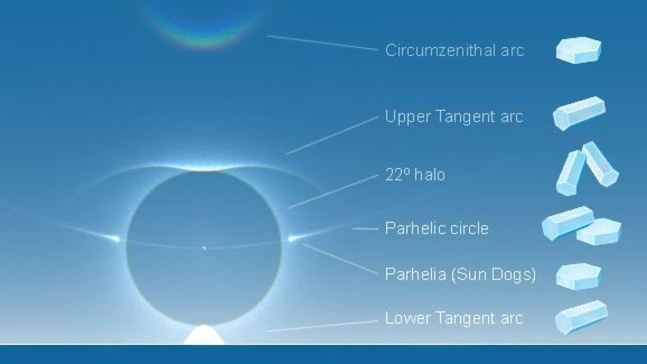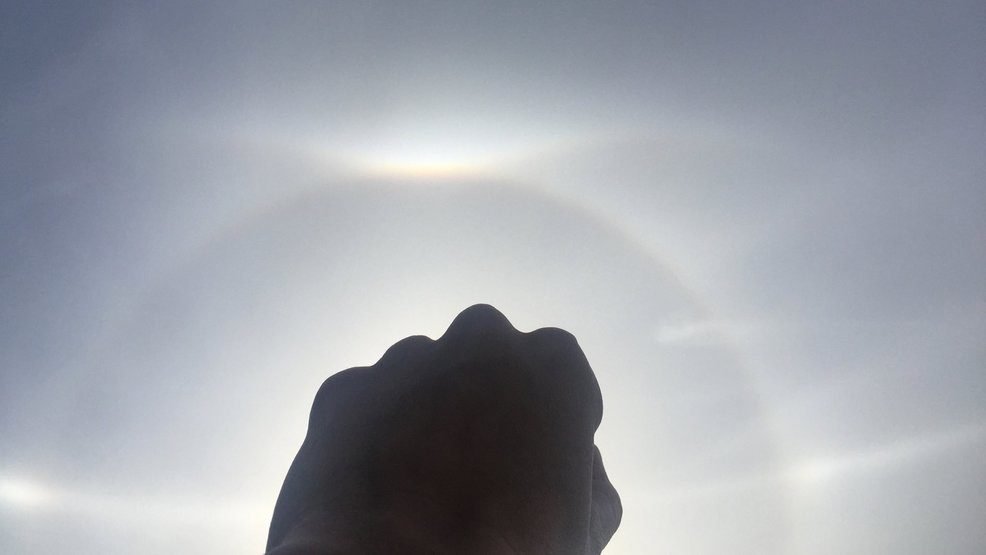Dr. Angela Rowe with the University of Washington Atmospheric Sciences Department noticed the rare display while at a 7:30 a.m. fitness class at Seward Park and made sure to snap some photos.
"I made everyone stop working out so I could explain what we were all seeing," she said. (As all weather geeks would... :) )
In general, the rainbow arcs are caused by tiny ice crystals in those high clouds that were spreading over the city on Wednesday. Each different arc requires a different shape of ice crystal and be in a different sky position relative to the sun to leave its mark.
The full circle arc around the sun is the most common -- known as a 22 degree halo. You can see this around the moon as well under similar atmospheric circumstances.
The two bright "glowing orb" spots directly to the right and left of the sun are called "sun dogs". Usually they just look like little bright balls or tiny comet-like appearances, but today you could also see the rare-to-spot Parhelic Circle(the sun dogs are the bright spot where the parhelic circle meets with the 22 degree halo).
"I don't think I've ever seen the parhelic circle (well, a portion of it) so clearly as this morning," she said.
But that's not all! Rowe also captured the Upper Tangent arc on the top of the 22 degree halo that looks a bit like a glowing seagull, which also has hidden in there a "Parry arc".
Still More?!?
You bet. If you look at this photo at the very top you can see another faint rainbow arc at the top -- this is called a "supralateral arc"
"The supralateral arc was especially vibrant at first, but quickly became faint as the sun continued to rise farther above the horizon," she said. "The Parry arc was the faintest, but I tried to bring it out a bit more so the upper tangent arc didn't totally steal the show."





Comment: In the past few weeks, the Puget Sound area in Washington has also seen a surge in the appearance of noctilucent clouds:
June 12: 'Rare' noctilucent clouds dazzle Seattle, Washington
June 18: 'Rare' noctilucent cloud drifts over Puget Sound, Washington